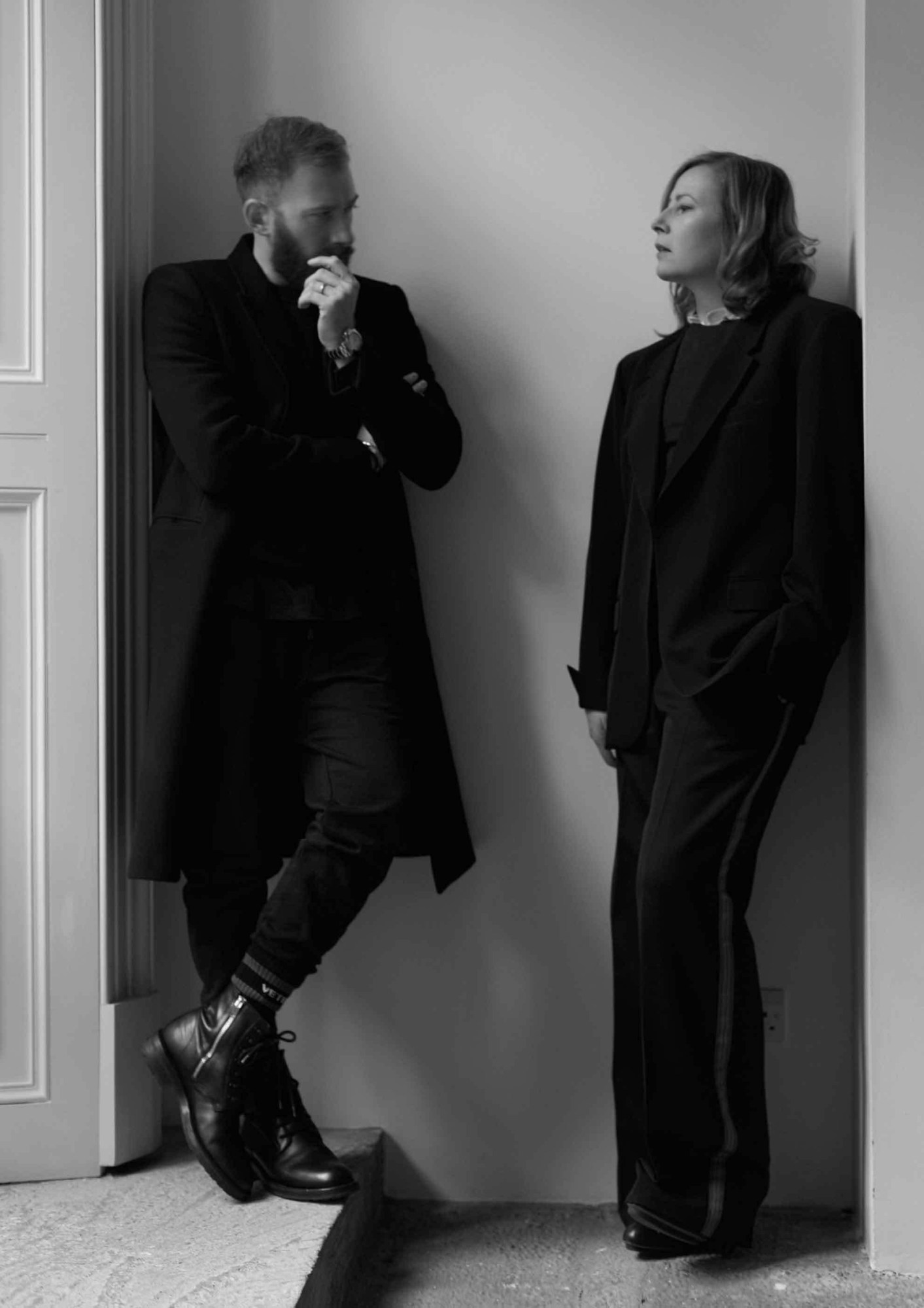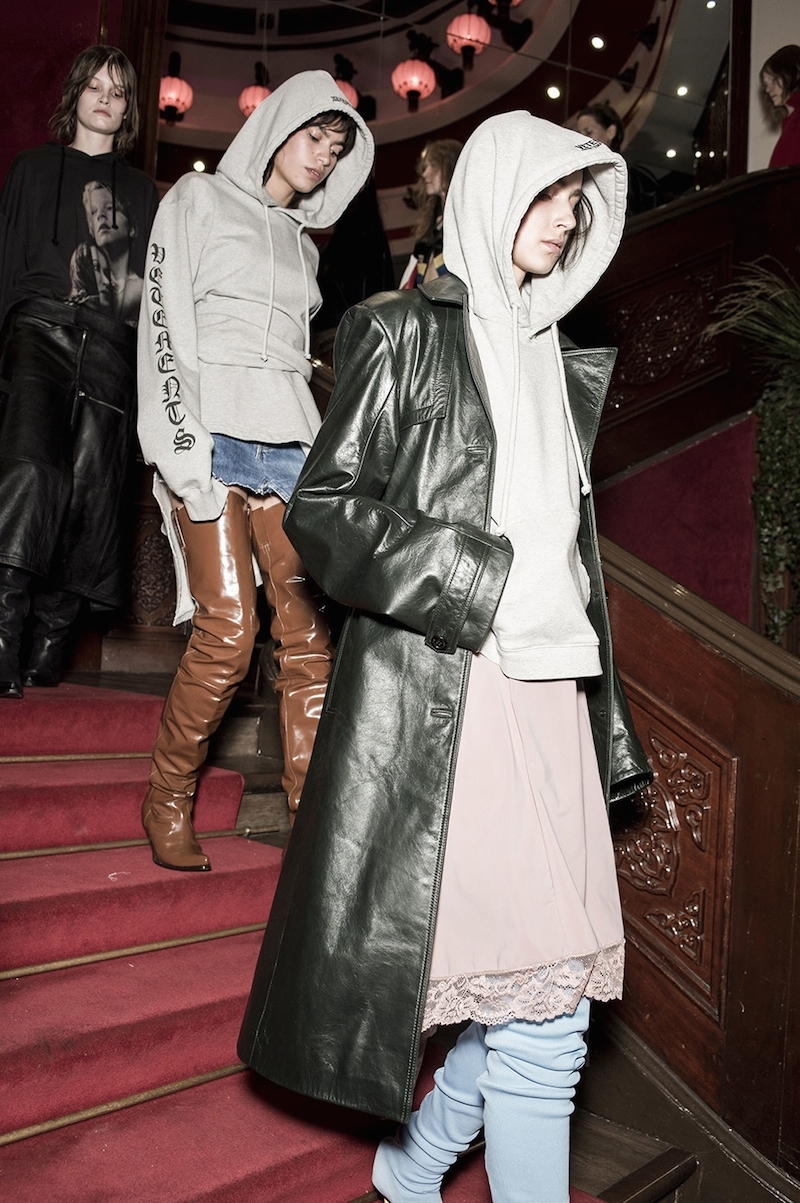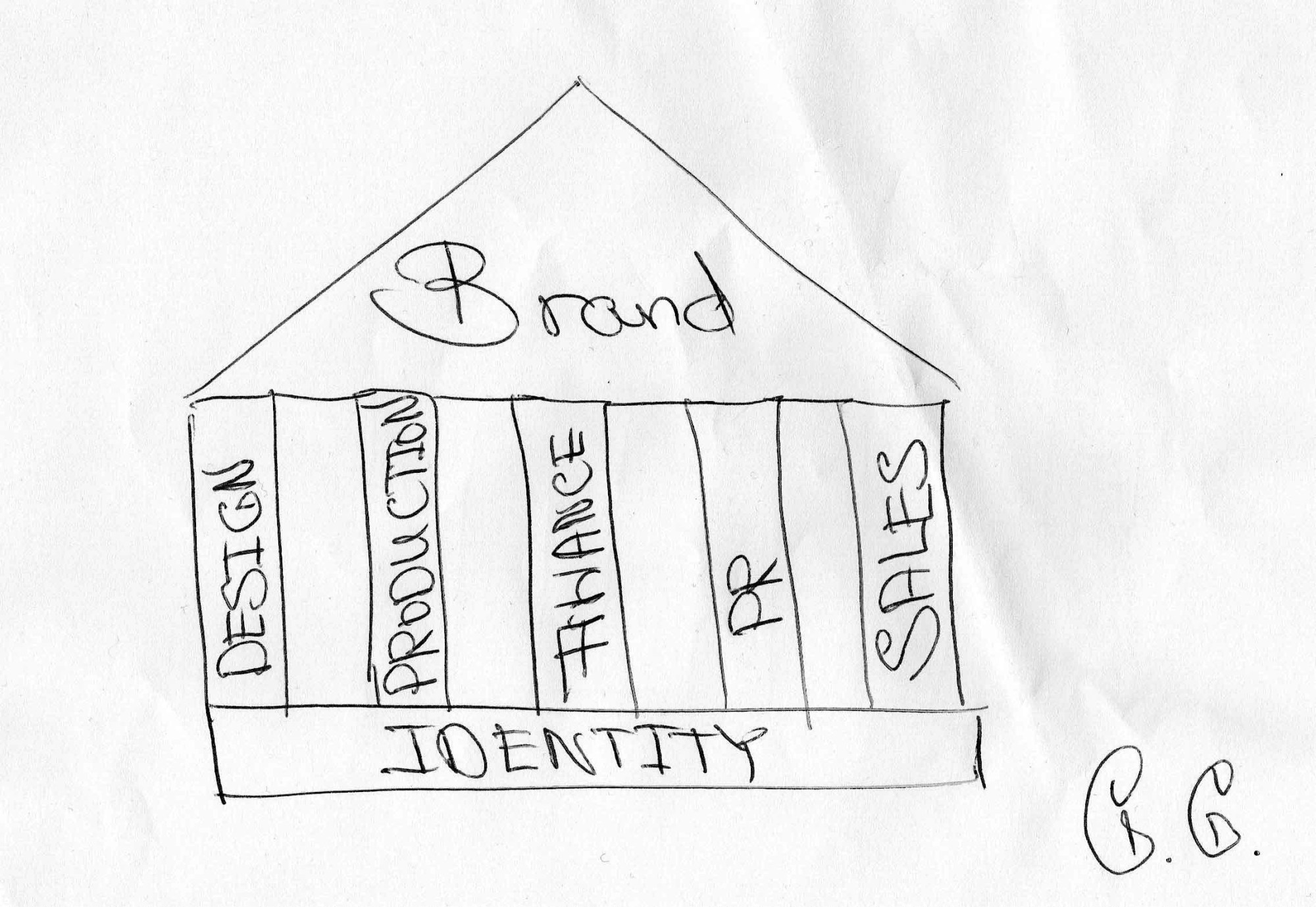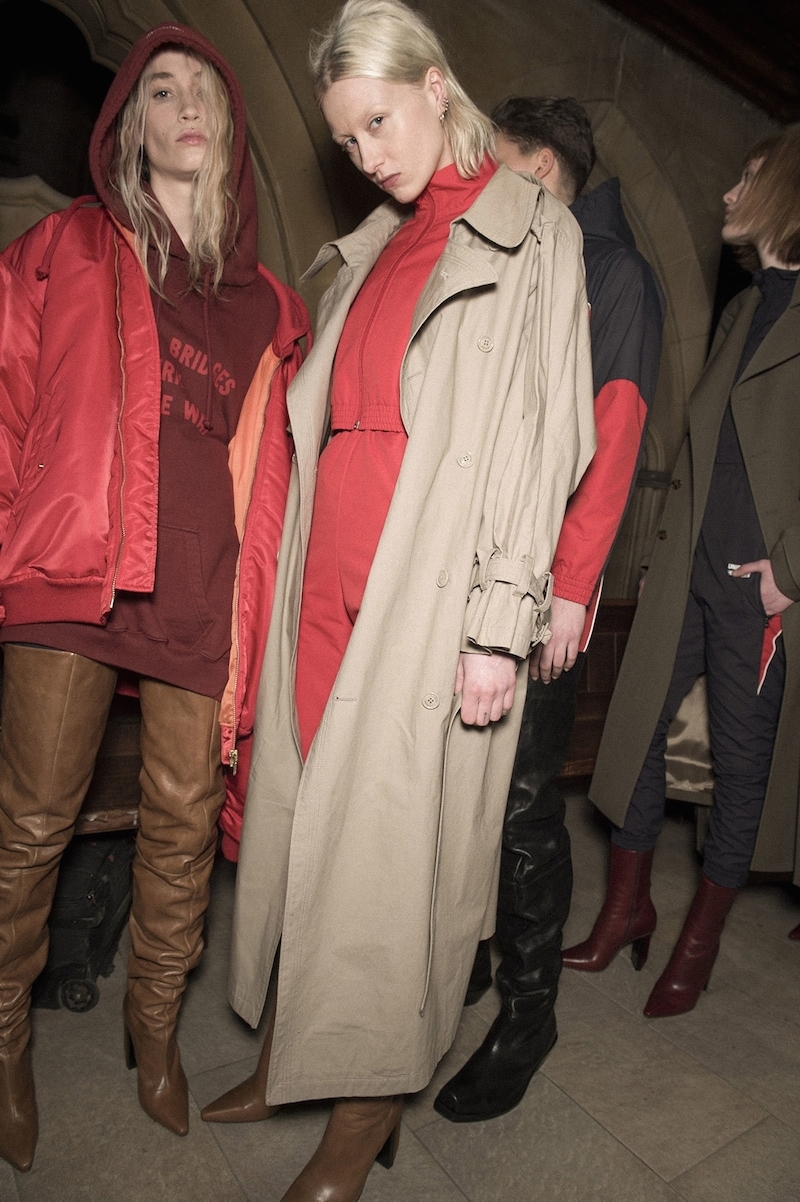Over the past months, fashion has been defined by doomsday debates about the speed of an industry devouring itself on overconsumption, too many collections, and designers crumbling under the pressures. In January this year, Vetements decided to change the game. In an interview with fashion critic Sarah Mower on Vogue.com, Guram Gvasalia — CEO of Vetements — announced a groundbreaking set of changes to the way he and his designer brother Demna Gvasalia — who just showed his first Balenciaga collection as creative director — will be showing and selling their Vetements collections.
The rules are simple: starting this June, Vetements will merge women’s and menswear in one show. “Their aim is a sweeping plan to cut out the necessity for pre-collections, beat the copyists, stop overproduction, and persuade others to come with them,” Mower wrote. Last night, she and Gvasalia took the Vetements revolution a step further, deciding to act rather than just debate. In town for the grand opening of the new Dover Street Market on Haymarket, Gvasalia invited hundreds of prospective young designers from London’s fashion schools to a talk at The Royal Institution in Mayfair, hosted by the London College of Fashion, where Gvasalia studied himself. Collective Action, as it was called, was a heads-on initiative to guide future designers in how to successfully create new fashion businesses in the current industry climate, and improve a fashion world on the verge of a breakdown. Whether you’re planning a future in fashion or you’re already in above your knees, you would want to listen to what they had to say. (Next to the students, independent designers including Marques’Almeida, Ashley Williams, Claire Barrow, Craig Green, Grace Wales Bonner, and Sibling were in the audience.)
Blessed with math brains to match his brother Demna’s creative talent, Guram Gvasalia has multiple degrees in international business, management, and law, and worked in sales for Burberry — which announced its own cutting edge business plan last month, too, followed by Tom Ford. He’s now the strategic brains behind the mega success that is Vetements. After the talk, Gvasalia gave i-D the lowdown on his vision for a better fashion future.

What made Sarah and you want to do this talk for the future designers of the fashion industry?
The fashion industry today is confused. It still plays by rules created decades ago, which are out of date and irrelevant to the real world. The industry seems to have lost itself in time. Sarah and I wanted to have a conversation about general issues that need to be solved. Speak directly to the young people, who are going to bring an industry that still lives in the 90s into the 21st century, is like speaking to the future hoping that it will be bring the industry closer to a dialogue with today’s world.
What needs to change in the way the fashion system has been working in recent years?
Complexity. The fashion system has become unnecessarily complicated. “Supply meets demand” is the basic rule of business that the whole industry seems to completely neglect. Overproduction is a huge issue. If something goes on sale it means it was overproduced and the overall supply needs to be reduced due to the lack of demand. Reducing the supply means reducing the turnover and making investors unhappy. One of the ways to keep investors happy is to create artificial markets. There are dozens of amazing stores located in villages or small towns in Italy that have turnovers of €70-100 million a year. The merchandise goes straight to the black market and is being resold in Asia. The second scenario is opening dozens of mono-brand stores and selling to them directly as much merchandise as possible to increase the general turnover, regardless of whether the final consumer will ever make a purchase or not. To sum it up the scary reality of the industry today it’s that two thirds of all the official numbers we read about are not real.
How would you in broad strokes sum up your recipe for a successful start to a young fashion business, and a healthier future for our industry?
To start any successful business it’s important to be fully dedicated to what you do and honest to yourself. The main thing to figure out is whether the door you are trying to open is really the door you want to enter. To build a fashion business you need to have two heads: the creative head and the business head. People who think they can do both usually fail. It’s like having a pair of shoes: with only one shoe, you won’t go a long way. A healthier future for the industry is giving young generations a chance to bring it up to date to the current state of reality.

When you founded Vetements two years ago, did you already have a detailed business strategy planned out and a vision of how you wanted to change the industry?
Once you start a business in your kitchen, changing the whole industry sounds cute. Our business strategy was to survive the first season. There has never been an evil master plan to change the industry. We just do what we love to do. Demna creates clothes and I strategize.
Last month you announced some major changes to the way Vetements will be presenting and selling its collections. What are the key points to this plan, and adopted by others, how will it benefit the industry and its designers?
Today retailers spend seventy to eighty percent of their budgets on pre-collections. Main collections become less relevant. The reason for that is the delivery cycle. If production goes smoothly the collection shown in March gets delivered by the end of July. Different circumstances delay full deliveries to September or October, as factories go on holiday in August. The US retailers start sales right after Thanksgiving. Therefore main collections spend an average of eight weeks on the shop floors, in comparison to the 24 weeks the pre-collections sit there. Hence, bringing the main collections from March back to January will result in earlier deliveries and an extension of product shelf life by an additional 16 weeks, or four months.
Taking the pressure off designers is a hot topic right now. What do you and Demna do to keep sane and not to overwork yourselves?
We definitely overwork, but in a good way. When you love what you do, it doesn’t seem like an obstacle. The best way to keep sane is sometimes just to stay home and switch off the wifi.
What are the most important things a young designer should do if she or he wants to start a business and make it work long-term?
It is important to ask yourself why you really want to start your own business. There are so many brands out there; so much clothes. In order to fulfil the wish of becoming a designer, sometimes it’s easier just to find a job within an existing brand. In order to start a business one needs to get experience so doing it straight out of school is dangerous. In addition it’s important to have a business partner to make a business out of it. Last but not least, you need to put capital in it.

How much capital do you realistically need to put into a new fashion business to make it work?
The more resources you put into building a house, the bigger and stronger the house will become. Starting a proper business that will brings return on investment that’s not merely a hobby will take a sum of five zeros.
How does a new business balance production, sales and PR, and what’s more important?
One might think business is a puzzle but it’s not. It’s much more complicated than a puzzle — it’s a watch. Different parts of a watch in their various sizes put together create a mechanism. But it’s not enough just to have a working mechanism. There should always be one person, who watches the time.
Are there any traps a young business should avoid falling into?
Trusting people, who promise too much. Free cheese comes only in a mousetrap. You should be careful with cash flow that can run out very quickly. And don’t take orders without prepayments and full payments before delivery, regardless how big the order and how trustworthy the buyer.

How can the rest of us as consumers contribute to a healthier fashion industry?
Stop buying things you don’t need. Start buying clothes you can cherish for years. Go away from fast fashion. Stop looking for bargains. Start looking for quality. Move towards the idea of slow fashion.
What are your thoughts on the business models recently announced by Burberry and Tom Ford?
On the one side it is great that established brands are looking for ways to improve the system, but creating a long-term working strategy is a bit more complicated than writing a press release. Perhaps the brands are just partially sharing with the public what they are planning to do. However, from the information available in the media both models have a number of loopholes. It’ll be interesting to observe both brands and see what finally comes to life.
What does luxury mean today?
What does anything mean today? Scarcity is the real definition of luxury. In today’s world of everything and everyone being so easily accessible, unavailability awakens curiosity and wakes everyone up from a state of hibernation.
Credits
Text Anders Christian Madsen
Photography Jeff Boudreau
Photography assistance Antonio Milevcic
Sketch Guram Gvasalia
Thanks to Daisy Hoppen, Chloe Lau and Gillian McVey
